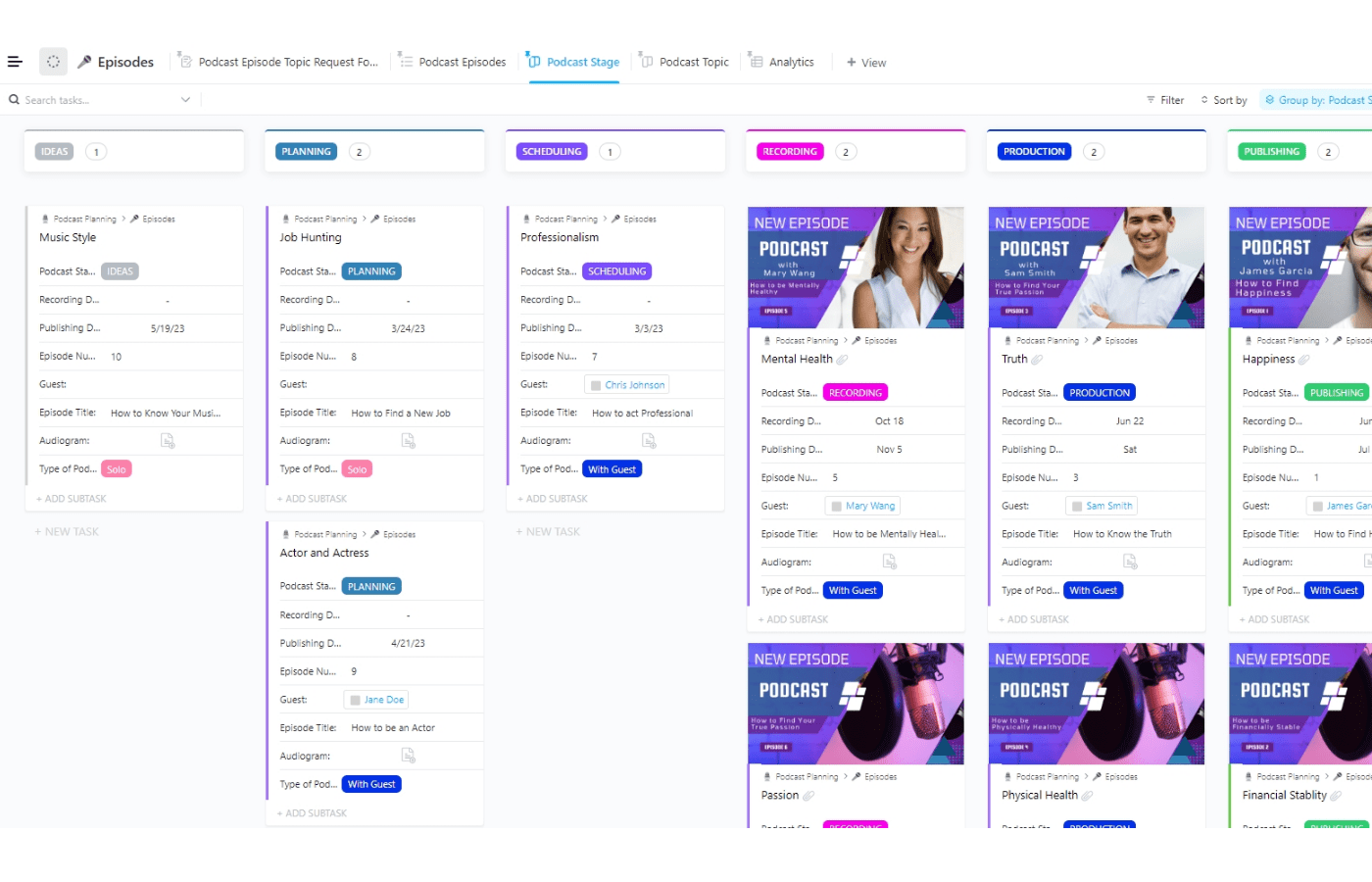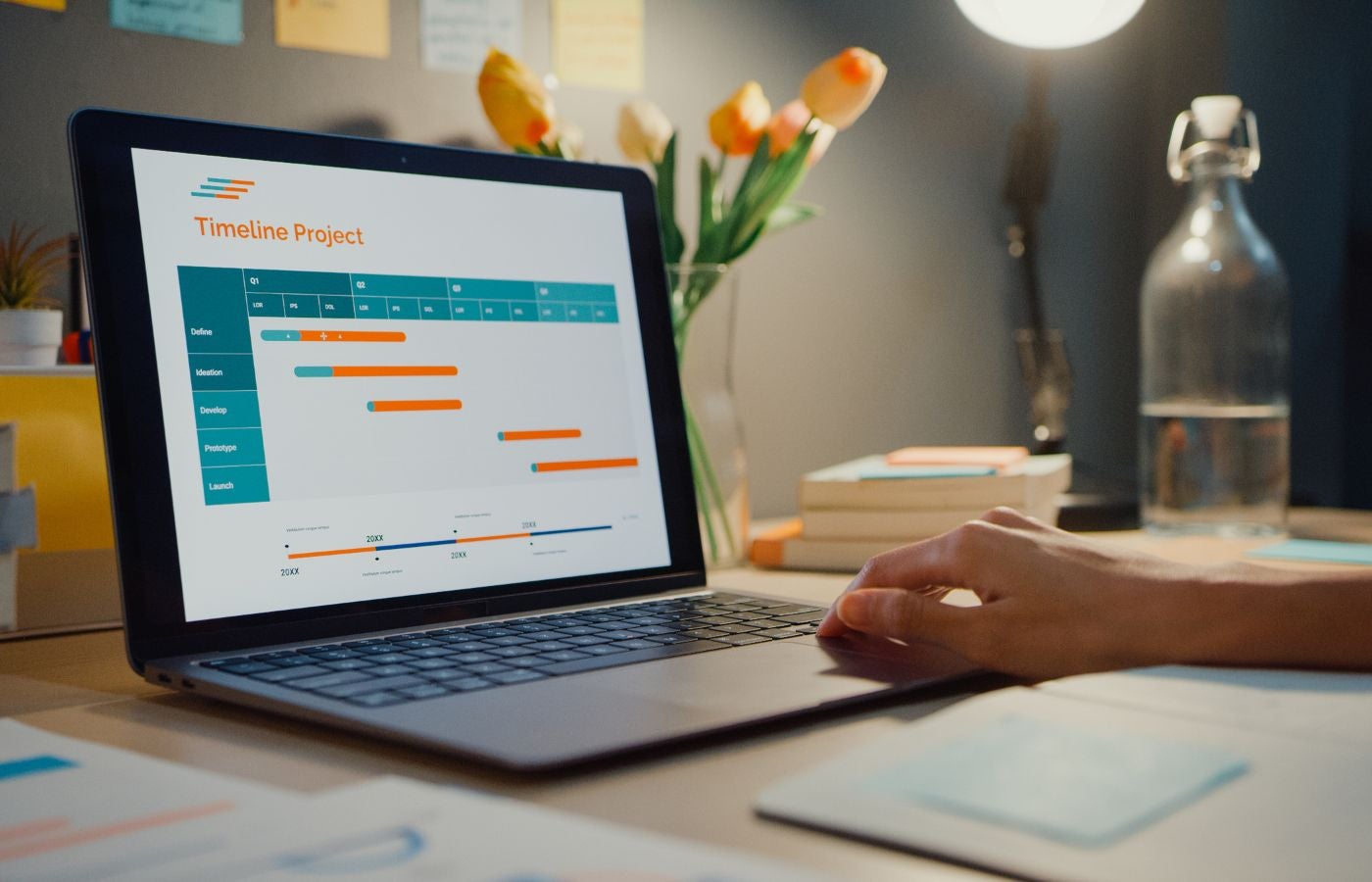The best task management software supports project managers with project planning and completing work, and makes it simple to check on what needs to be done. Task management software also makes it easier to see and filter long lists of tasks, reprioritize things if needed, and to see what is coming next.
Completing a project typically involves the completion of hundreds of tasks, some simultaneously and others requiring other team members to complete work within a defined time frame requires impressive attention to detail. There are a lot of great options to choose from when it comes to software support. If you are curious about whether or not you should invest in task management software, consider some key benefits of making it an essential part of your project management toolkit.
The Ultimate Task Management Software Guide
Every project manager knows that a new project can seem almost unmasterable in the beginning. The way to tackle a project effectively is to reduce it down into a series of tasks. Knowing how to manage all tasks for everyone involved is what makes project managers necessary and effective and ensures that projects are completed on time.
The main responsibility of project management is task management. On a basic level, task management means having a giant to-do list for everything that needs to get done. This can quickly become overwhelming when managing complex projects with diverse workloads and multiple workstreams.
Fortunately, there is an abundance of digital solutions to help streamline task management.
Best Task Management Software
The market for task software has changed a lot in recent years. If you own a small business, you might need a simple tool to manage your projects on a strict budget. On the other end of the scale, enterprise PMOs require a much more robust, scalable solution.
Regardless of your business’s size, there is a task management system that fits. While most of the tools on this list aren’t entirely free, they do offer x-day trial versions that enable business owners to try them. Here’s a list of the best task management software solutions for 2022:
The Ultimate Task Management Deep Dive
Task management is the term used to describe how project managers manage a task through its life cycle. It includes planning, analyzing, evaluating, and reporting on an individual task’s progress. It is an important aspect of the management of a project because it helps to follow every task thoroughly from beginning to end.
Experienced project managers know that every new project seems almost insurmountable at first. The only way to tackle a project effectively is to reduce it to a series of tasks. Knowing how to manage their tasks (as well as everyone else’s) is what makes project managers effective and ensures that projects are completed within their allotted time frame. Thus, a big part of project management is task management.
In its simplest form, task management essentially means having a big to-do list for all the components that make up the project. However, this simplistic approach may not be suitable for managing complex projects with diverse workloads.
Fortunately, we live in an age of easy outsourcing and abundant digital solutions. Whether you need help, guidance, or advice in managing your tasks, or a piece of software that will keep you on target, a solution is always easy to come by. We provide information on task management systems that’s absolutely free!
Join us as we guide you through everything you ever wanted to know about task management but were too afraid (or just too busy) to ask.
Task Management vs. Project Management
The terms “task” and “project” management often get tossed around in similar contexts and can become confusing. It is important to understand how they are different.
Tasks are single units of work, and managing a task includes handling all of the aspects of that individual task. Projects have specific start and end dates and are made up of many individual tasks. Managing projects includes the bigger picture of managing all of the tasks within a project.
Task management and project management software are often used interchangeably, too, to describe similar tools, but the difference in task and project management software lies in their relative scope.
Task management software is essentially a to-do list. It provides users with a place to store and organize tasks. Depending on the complexity of the tool, it may also include features for prioritization, due dates, assignments, alerts, and file attachments, but these are not required.
Project management software is built to organize and track the hundreds of tasks, subtasks, documents, and communications that are required to orchestrate and complete a project. These tools often include the ability to create several projects and programs, create and assign tasks and subtasks, allocate resources, submit files for collaboration, and analyze data points.
Trust Technology to Help Manage Your Tasks
Task management software keeps project teams proactive and on top of the “tasks at hand.” If you are not working proactively, then you are most likely operating reactively, which is not a productive way of working at all. You can’t expect to be efficient at accomplishing much if all you’re doing is reacting to the last call, message, or email you received.
Managing at the task level ensures that people are able to constantly prioritize their workloads and avoid wasting time trying to figure out what it is they are supposed to be doing and when. This is imperative with all of the distractions in today’s world. No matter how dedicated, focused, hard-working, and eager you may be to get things accomplished, even the best of us are prone to distraction from time to time.
Without task management software, it’s more difficult to stay on top of the workload and ensure your team consistently hits its deadlines. Utilizing task management software will bring about the following benefits:
- You know what your list of tasks and highest priorities are.
- You can see everything the team is working on all at once.
- It’s clear to see how much time you have available to complete your tasks.
- Tasks can be integrated all in one place and grouped together for greater operational efficiency.
- You can access all tasks for up-to-date status from anywhere and at any time.
Facilitating Task Management
Task management becomes quicker and easier with the right tools. Whether you’re using a wall of sticky notes, a simple spreadsheet, or a sophisticated piece of software, your efficiency in task management is directly linked to the tools you choose.
While a sticky note or basic list approach may be comfortable and familiar, it can be tricky to move tasks around, group similar work items, and prioritize them in the best order. And when things shift or change, it will be harder to update without spending a lot of time redoing it all.
Task management software helps by automating the process and making it more flexible to create and update. You simply input the list of tasks that need to be completed by everyone for the project and add a new task or sub-task to each item as needed.
In addition to this basic functionality, task management software can also:
- Define custom views to make projects easy to understand
- Generate lists for easy distribution and dissemination
- Filter lists by time periods, such as days, weeks, or months
- Store comprehensive details on tasks and link related files
- Track time against a project budget
- Pull reports for billing of hours for vendors, consultants, and freelancers
- Manage hundreds of tasks simultaneously and access them with just a few clicks
Managing Your Project Team’s Tasks Successfully
Project managers must ensure their own tasks are managed effectively, along with everyone else’s on the team as well. While they can control if their own work is done on time, they may not be able to say the same for all those involved in the project.
Project managers often find themselves spending significant time chasing other team members’ tasks, even if the task is an action that has been recorded in the minutes and action items of a meeting.
This is where task management apps and software can save project managers a lot of time and work. When someone takes action in a meeting, the project manager just needs to make a note of it and add it to their task management software. They then assign it to the right team member, and it will show up in their own personal to-do list. This keeps the team members easily and instantly accountable for their own workload.
Best of all, the project manager can monitor other team members’ progress and see how they are coming along on specific tasks. They can filter the project’s task list by resource to see who’s working on what and get an at-a-glance view of each team member’s workload. They can even send reminders to let them know when a deadline is looming.
In task software, to-do lists are linked to resource reporting, so managers can see how evenly the work is spread out. They can even identify if some people have too much to do and those with too little, saving time and reducing the duplication of effort by reprioritizing and reallocating resources as needed.
Understanding Task Management Software
Upon logging in, the first thing you will see are the tasks themselves. You’ll see work assigned to you for each particular day and week split into discrete tasks that you can order in terms of priority as things evolve. For example, if you only have access to a team member or resource in the morning, you can front-load all tasks pertaining to them to tackle at that time of day.
Click on any task, and you’ll see more details related to that task’s work. In some cases, you may be able to share status updates, add hyperlinks and notes, and upload files on your tasks. Everything you and your team needs for the day and week is kept in one place with clear visual reminders of what needs to get done.
Any overdue tasks will be highlighted in red. This is helpful in identifying which tasks need to get pushed to the top of your to-do list or to agree with your team that the target date for completion needs to be changed. Some software allows you to set notifications and receive an email in the morning with what is due that day, what is coming next, and what may be overdue.
Staying on Top of Things: Task Tracking Software Features
Depending on your task software, you may also see a column that shows “% Complete,” indicating how your team is progressing on the day’s work. Anything over 0% shows the project manager that the task is underway, and when it reaches 100%, the task is considered complete, allowing you to move on to the next with peak efficiency.
Team members can update this manually as they progress, or you can during status updates and reviews. The data that is submitted flows through to their timesheets and updates the project manager’s timeline and dashboard to reflect how the team is progressing and how far along the project is as a whole.
How Should Task Lists Be Updated?
When team members are focused, it’s tempting to defer updating your to-do list, but this can prevent project managers from seeing the status of the project as a whole. The easiest way to stay on top of tasks and track progress is for every team member to update their lists immediately after each individual item on it has been completed.
Alternatively, some project managers may prefer to have each team member update their to-do list at the end of the day and mark off completed tasks. Or, a project manager can run through the lists of each team member’s tasks that have not been updated during a status update and make any changes based on the latest input that person provides.
Updating to-do lists is quick and easy and ensures everyone starts work the next day with a clear idea of their workload and priorities. Make sure a few minutes are set aside at the end of each day and week to do this while your team members fill out their timesheets.
Should Task Lists Be Shared?
Task management may originate with project managers, but it works best when everyone has visibility. Task management software makes it easy to share your project task list with your team. They can see the progress of the task as a whole while also zeroing in to edit the items they are individually responsible for.
However, in the interests of clarity, project managers might want to keep their personal tasks separate from project tasks, as these might not always be directly related to the project, and thus, don’t need to be shared with the team. Less is better in this case.
How Can I Save Time With Task Management Software?
There are only so many hours in a day, and it’s smart to squeeze the maximum productivity out of every working hour. Managing your tasks and those of your team can take up valuable time, but do it right, and it will save time and cost.
Without the assistance of task management software, you are guaranteed to get overwhelmed, mismanage team members and resources, and even miss deadlines without clear priority. Choosing to ignore task management solutions will cost time, money, and create a whole lot of stress.
Here are some tips for saving time with task management software:
Tip #1 – Get organized.
Stop sending to-do lists, meeting action items, and reminders through email. As soon as a new item comes up, simply add it to the task list, schedule it, and assign it to the person responsible for the work to get it going right now, not later. This may seem obvious. But getting into the habit of “touching” something only once is a valuable skill that will lessen your cognitive load.
Tip #2 – Use a real-time calendar.
Your calendar is an invaluable resource. But if you’re still tracking on paper, or using a spreadheet, it is time to evolve. Using a connected, real-time calendar connected to your task management system makes it quicker and easier to check your project schedule, and monitor progress for all of your tasks. Further, you’ll have quicker, more intuitive visibility on your day, week, and month. You can identify when you’ll be busy, when you’ll have extra capacity, and when you need to delegate. This makes for more efficient time management for you, and more clarity for your team members.
Tip 3 – Prioritize your workload.
Having a single, centralized task list for you and the team is helpful, but it doesn’t guarantee productivity. Be sure to prioritize your tasks, delineating team items that are urgent or important. You can change the urgency and priority of different tasks from day to day and update those involved with the click of a button.
Tip 4 – Track your time.
Time is arguably your most precious resource. Using timesheets can help you see where this precious resource is going. When you can see where you and your team are spending your time throughout the day, it becomes much easier to prioritize time.
Tracking time for tasks as they are accomplished saves time later when trying to remember exactly what was done and when. A more accurate reflection of time spent is best recorded at the time of the task.
Tip 5 – Less meeting equals more work time
Spending less time in unnecessary meetings leaves more time for actually getting the work done. No one loves excessive time in meetings or days of back-to-back chaos.
Plan meeting times for when decisions need to be made and questions need to be answered and set up tasks to get the work done outside of group time. Everyone will be thankful for it.
Try Task Management Software Today
With so many task management software and tools to choose from, collaborative projects have become so much easier to handle. Finding the right tool is possible. You just have to take the time to test a few tools before making a final decision. As you try them out, write down the pros and cons of each, so you can make an educated decision.
Ask your team to weigh in on the choice since they’ll be using the software, too. You will quickly become convinced that task management software is the best way to go and the results will be obvious right away.
With these task management software and tools, collaborative projects have certainly become easier to handle. If you are a project manager, take a look at some of the tools we’ve recommended above.
Finding the right tool is possible. You just have to take the time to test 3-4 tools before making a final decision. Also, make sure you write down the pros and cons of each, so you can better decide later. Ask your team to weigh in on the choice since they’ll be using the software, too.





